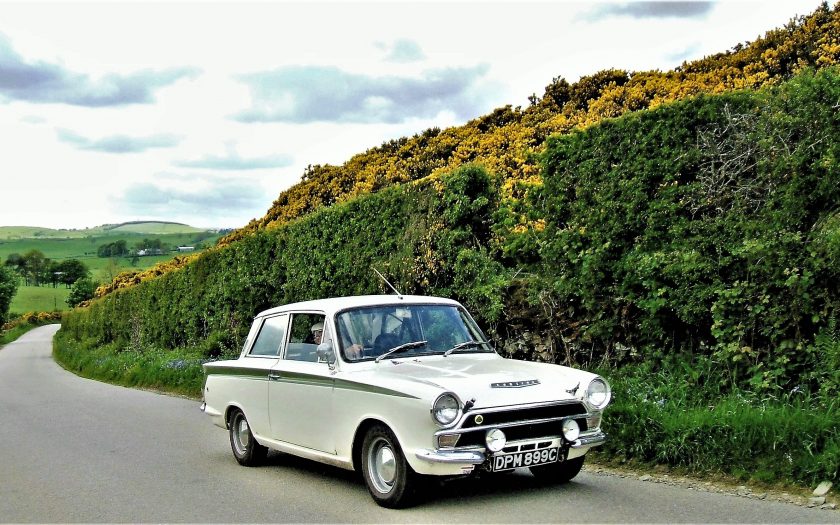Drive Berwickshire backroads, Scotland, 100km
Car Ford Lotus Cortina Mk 1
Story Barry Green
Images Dawn Green
There’s a video that reminds me vividly of my limitations as a driver. It’s a freebie that came with a copy of Classic & Sports Car magazine some years ago; a montage of memorable, motorsport moments.
Among the compilation is footage of the late, great Jim Clark racing a Ford Lotus Cortina in the 1964 Sebring 12 Hour sports car enduro.
For a driver whose touch in an open wheeler was as fine as peach fuzz, this mellowing, colour sequence surprises by showing the Flying Scotsman to be a veritable demon behind the wheel of a touring car.
Through the bendy bits of the flat and bumpy airfield circuit, he appears to be cornering the car nearly on its door handles. Such is the approach and mid-corner speed, that he has to lift off on exit or risk running up the rump of the vastly more powerful Ferrari prototypes and Shelby Daytonas.

Now, back to the future: When planning a trip to Scotland some years ago, I thought how much fun it would be to see some of the countryside from a similar perspective – through the windscreen and side window of a precariously-poised, hard-cornering Mk 1.
A Google search showed up such a beast for hire through www.motorparty.co.uk. Deal done; we picked the car up in exactly the same condition as it finished its last rally.
That’s right, this was no nicely restored, road-going version but a sing-for-its-supper, classic rally car complete with roll cage, safety harnesses, stripped-out interior, sundry performance mods, spotties and bodywork that told of some close encounters with errant hedgerows or worse.
My better-half was more than a little gob-smacked at this, but she was soon belted in and calling the directions to Chirnside and nearby Duns, Clark’s home town. We’re making a pilgrimage, visiting the great man’s grave, a museum in his honour (the Jim Clark Room) and driving some of the very roads he would have.
At low speeds, the Lotus acts belligerently, the thirsty Webers demanding plenty of throttle to keep the engine from spluttering and complaining madly. Like many a competition car, the secret is the faster you go, the easier it is to drive.
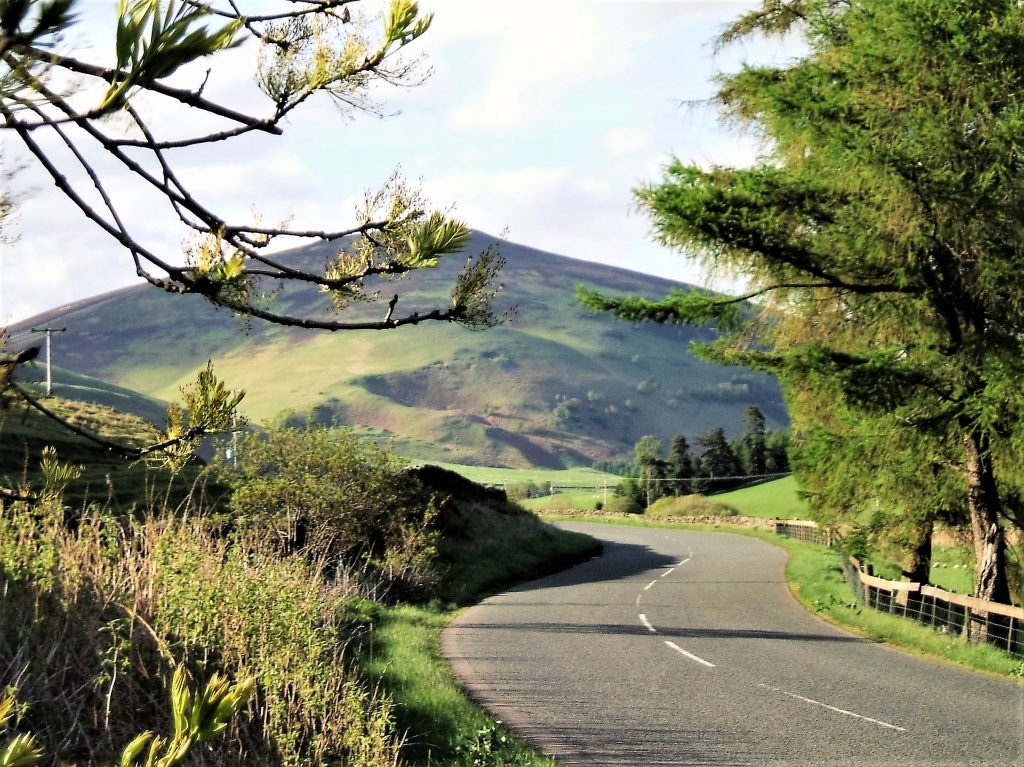
A couple of hours later, we enter the picturesque, gorse-lined B roads leading into Chirnside, the green and yellow colours of the hedges reminiscent of Team Lotus’s original race livery. The parish church and cemetery hark back to the mid-12th century. It is here, at the corner of Kirkgate and Berwick roads just a short walk from the High Street, where Jim Clark’s final resting place is located, the second-last-but-one grave to the stone perimeter fence
At just six degrees Celsius plus wind chill, the frigid scene is a world away from those hazy, crazy days of summer and the halcyon Tasman Cup series in Australia and New Zealand, when Clark and his various Lotii were the combination to beat.
There is a common denominator between then and now – a winner’s laurel wreath. How many times did we see Clark with one draped around his neck during those unforgettable visits of 1961 and 65-68? Thirteen, was it?
Statistically, his winning record of two World Drivers Championships in 1963 and ‘65, 25 F1 Grands Prix and the 1965 Indianapolis 500, is not as extensive as some others. But then, Clark’s was an incomplete career, for on April 7, 1968, in a Formula 2 race at Hockenheim which he really never wanted to race, he crashed and died while at his peak.
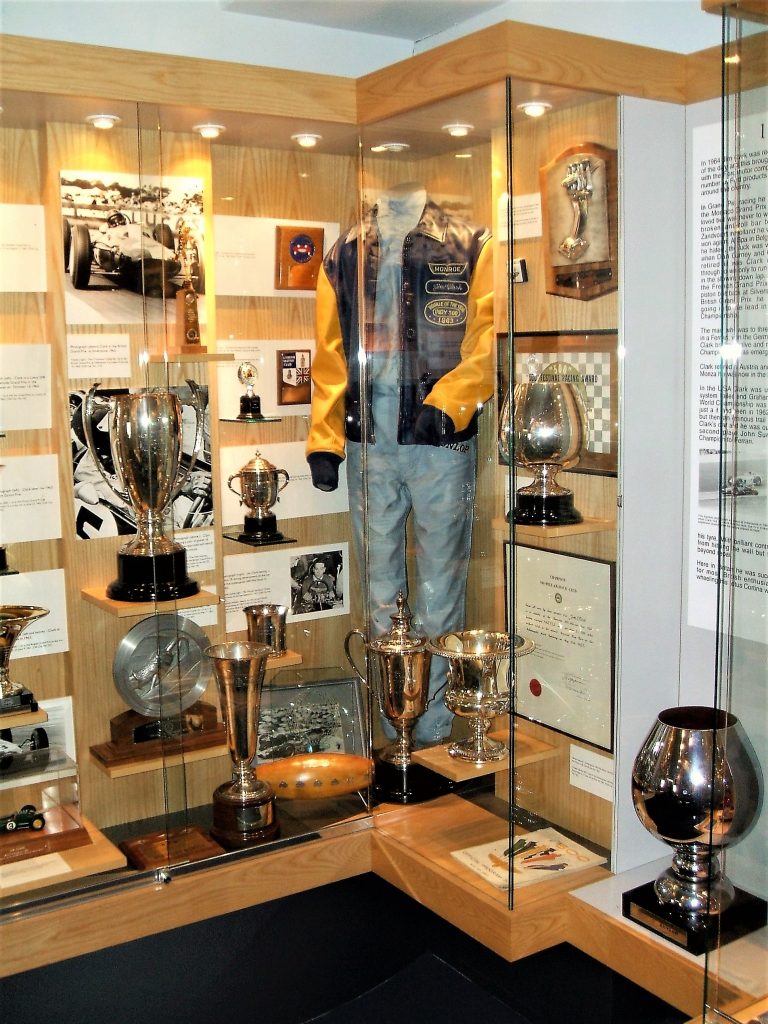
In any case, statistics alone are not a measure of a man. His peers were under no illusions just how good Clark was.
Graham Hill: ”Jimmy was unsurpassed in his era.” Jackie Stewart: ”To me he was the driver’s driver, for everybody he was the complete racing driver.” Stirling Moss: ”Take any six top drivers and six cars, put them in any combination you like and Clark would win.”
Pausing by the graveside, the echo of these plaudits intermingles with my own favourite memories. But the time comes to cease reflection, respects paid, and continue the pilgrimage. We return to the High Street, to where a public clock erected in Clark’s memory takes pride of place.
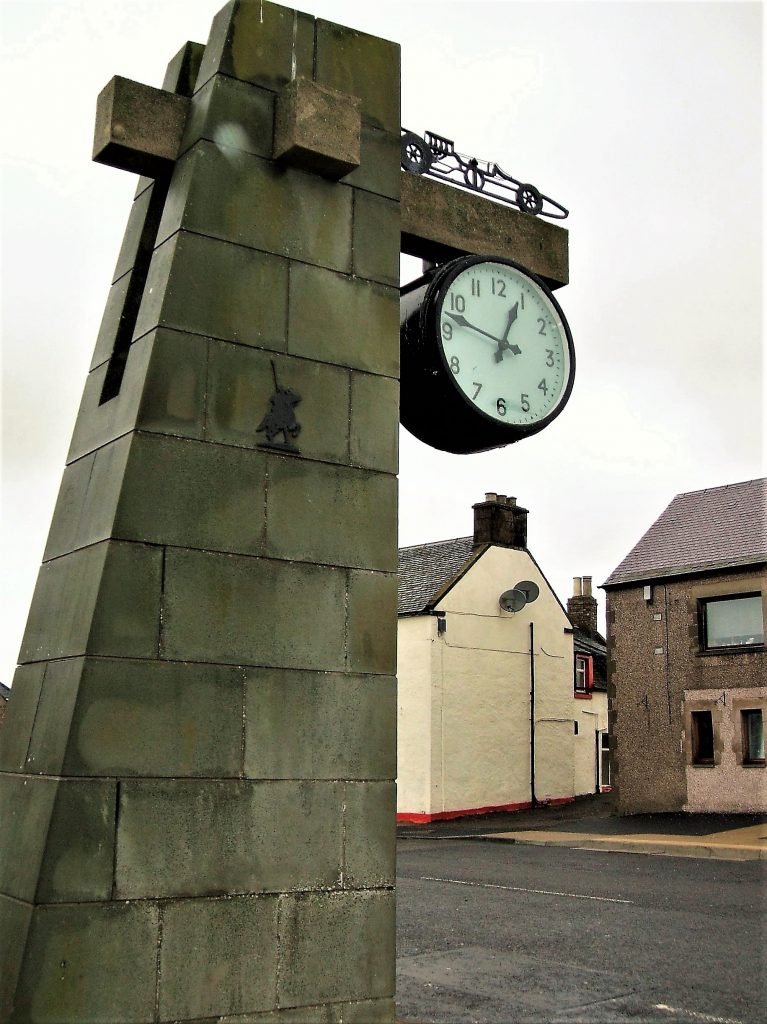
Designed by his lifetime friend and motor racing associate, Ian Scott-Watson, the silhouette of a Lotus F1 car shaped in metal on top of the clock structure gives a ready clue as to its significance.
It seems a little incongruous, this memorial. After all, Jim Clark spent much of his life racing the clock, in search of those vital tenths and hundredths of a second, but, in the end, time was not on his side.
From the High Street, I head the Cortina west on the A6105, for while he may be buried in Chirnside, his life is also commemorated in nearby Duns.
At the town centre, we continue along the A6105 towards Greenlaw, passing the Jim Clark Room (a must visit) to the right before taking a left at Clockmill which leads to Langton, a 5km loop set inside a small valley that forms a stage of the Jim Clark Rally.
Bumpy and narrow, it bristles with challenge: a number of tight 90-degree, left-and-right turns; a water splash and couple of places where you will get a little air under the wheels. The-Cortina, wound up in 2nd and 3rd with engine note full of serious intent, is now in its element.
The moment is not lost on me. It’s both a buzz and humbling to think that these are the swoopy, sinuous roads this great man – the drivers’ driver and champions’ champion – might have tackled in the very same model.
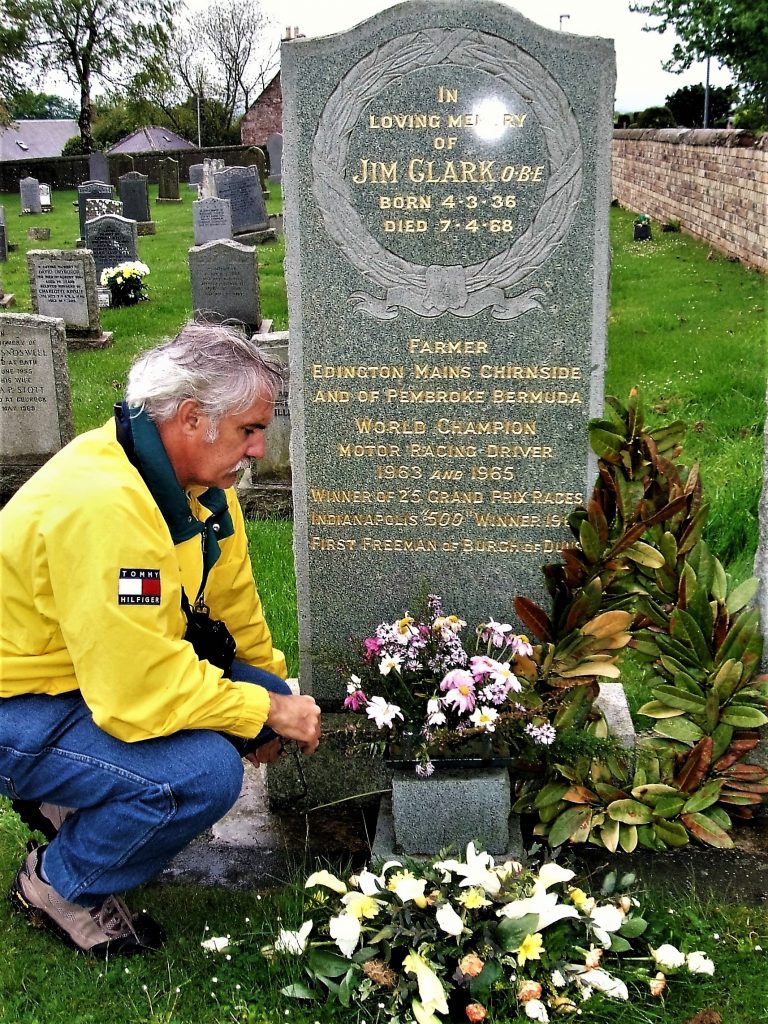
Car Specs:
Basic price: £992 (new, 1965)
Engine: 1.6-litre DOHC inline 4-cyl
Power: 78kW @ 5500rpm
Torque: 146Nm @ 4000rpm
Transmission: 4-spd manual
Weight: 876kg
Drive: Rear-wheel
0-100km/h: 10.5sec.
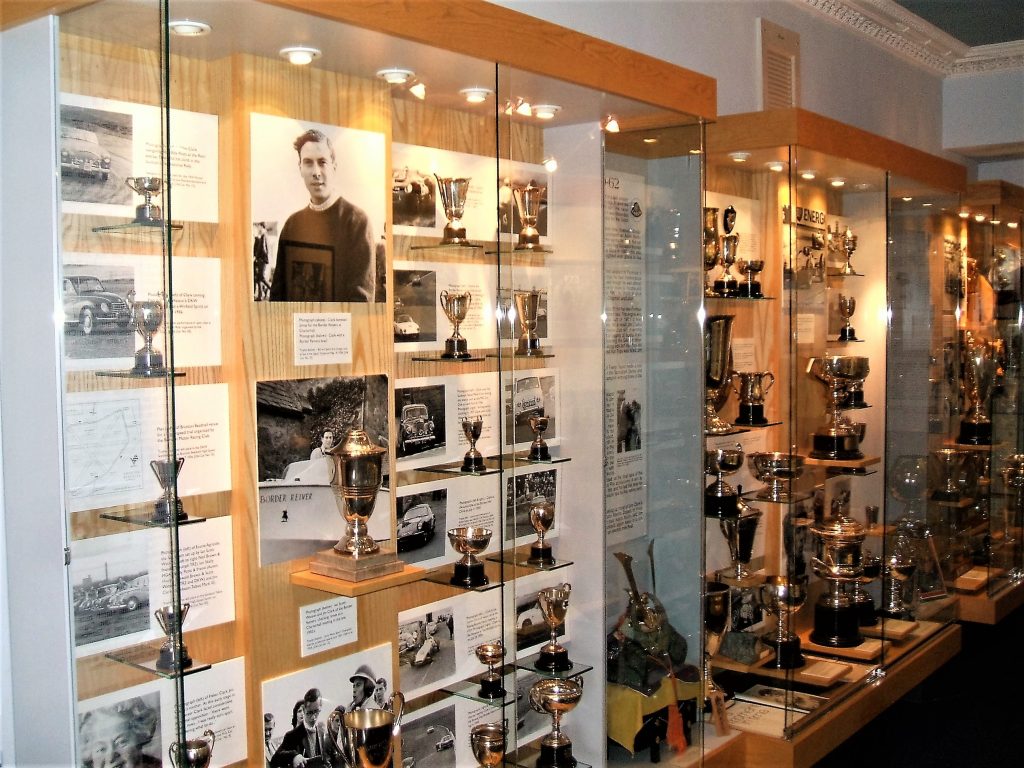
A Room with a View
DUNS IS WHERE acclaimed medieval scholar and religious thinker John Duns-Scotus was born in the 13th century. Asturdy stone church anchors the village, behind which is a labyrinth of narrow, tiny streets reinforced with buildings pitched at odd angles. A short, steep climb up Duns Law (hill) is rewarded with views across to the nearby castle.
But 44 Newtown Street and the Jim Clark Room remain our port of call. It’s well signposted and easy to find; a car park readily available nearly out front. The idea for this intimate place of homage came about when Jim’s parents gifted the majority of his awards and trophies to the Duns Town Council. The Jim Clark Trophy Room, as it was then called, was officially opened in 1969 and by 1992 had welcomed more than 200,000 visitors.
To commemorate the 25th anniversary of Clark’s death, the Berwickshire District Council voted to refurbish the room into more of a museum and this upgrade was officially opened by (later Sir, OBE) Jackie Stewart in April 1993, as part of a Jim Clark Festival weekend.
There’s enough weight of silverware to make 100 mantlepieces groan. You would expect to find something celebrating his many race wins Down Under and there is: a big bowl for first place at the 1968 Surfers Paradise round, and the Lady Wigram Trophy which was contested annually at the RNZAF base outside Christchurch.
Tick off also the odd curiosity: a Japanese warrior’s bronze helmet and headgear on a black casket, presented in appreciation of his advice on Japanese race circuit design (Fuji?); a Time magazine cover dated July 9 1965 titled ‘Quickest Man on Wheels’; and a Swiss cow bell inscribed with ‘1965 Jim Clark on winning world title’.
Then there’s more material things: a mannequin wearing a bright blue Jim Clark cardigan, made from a pattern that appeared in a Sunday Telegraph knitting book Six Stars in Wool; a blue leather jacket with yellow sleeves for finishing Rookie of the Year 1963 at Indianapolis; a pair of cream Nomex overalls with pale blue and red sleeve flashes and Pure emblem, also obviously from those successful sojourns to the US.
The faithful can record their calling by signing the visitors’ book, among the many signatories therein is one Ayrton Senna. I’m not sure what the brilliant Brazilian made of it all, but for me, this was an experience of mixed emotions; some rejoiceful, but mostly poignant. I’m not alone.
There’s prose of praise aplenty, but perhaps a heart-felt poem penned by local enthusiast Jack Dalgleish, of nearby Coldstream, in those black days soon after Clark’s death, and on show in the Jim Clark Room says it best. The last verse reads:
‘No more the joy of hopes fulfilled
The plaudits of the crowds he thrilled
And though twice champion of the world
No more the chequered flag unfurled.’
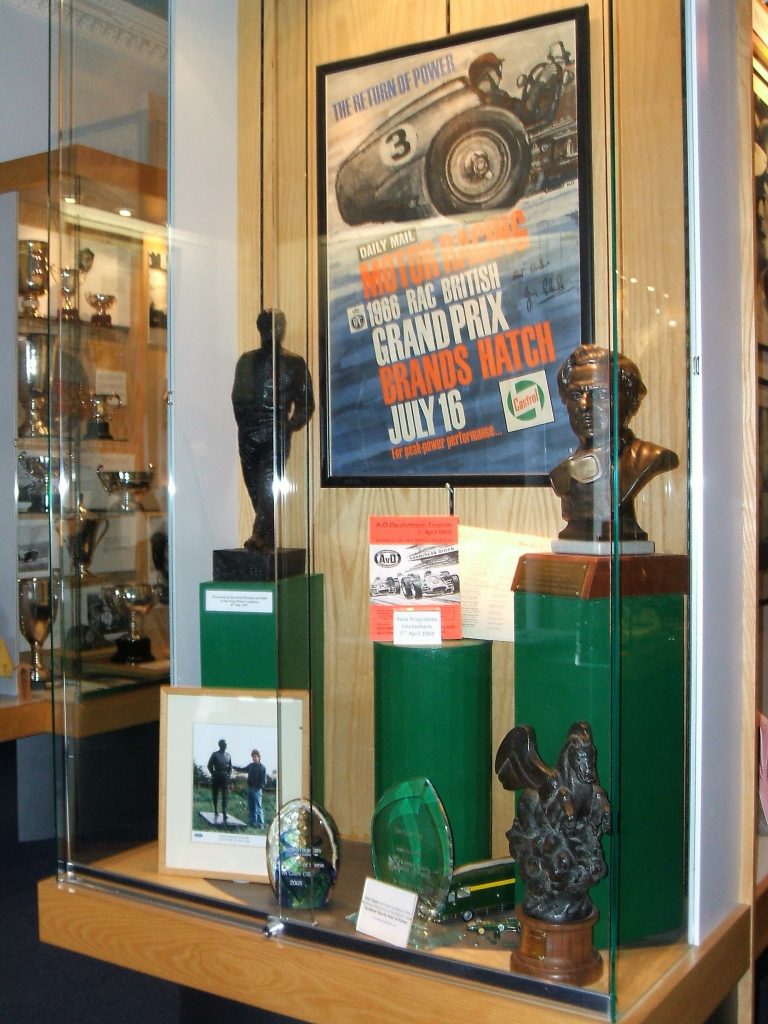
What’s Happened Since …
THE JIM CLARK Room has morphed into the bigger, brighter and better Jim Clark Motorsport Museum, which Sir Jackie Stewart OBE officially opened in August 2019.
Much of the amazing memorabilia displayed in simpler surroundings previously – including a collection of more than 100 trophies gifted by his parents James and Helen Clark – remains on show, but the award-winning attraction has fast-forwarded to the 21st century with hands-on interactive displays and a classic race car simulator.
The star attractions are two of J.C.’s most famous race cars, a Ford Lotus Cortina (now owned by fellow Scot and Indycar champ Dario Franchitti) in which he won his class at every round of the 1964 BTCC, and an iconic Lotus Type 25. Powered by a 1.5-litre Coventry Climax V8, Chassis R6 was driven by Clark to victory in the Dutch, Belgian, British and French Formula 1 Grands Prix in 1963, ‘64 and ‘65.
The new museum is the result of a major £1.6m redevelopment over 15 months following a five-year fundraising campaign.
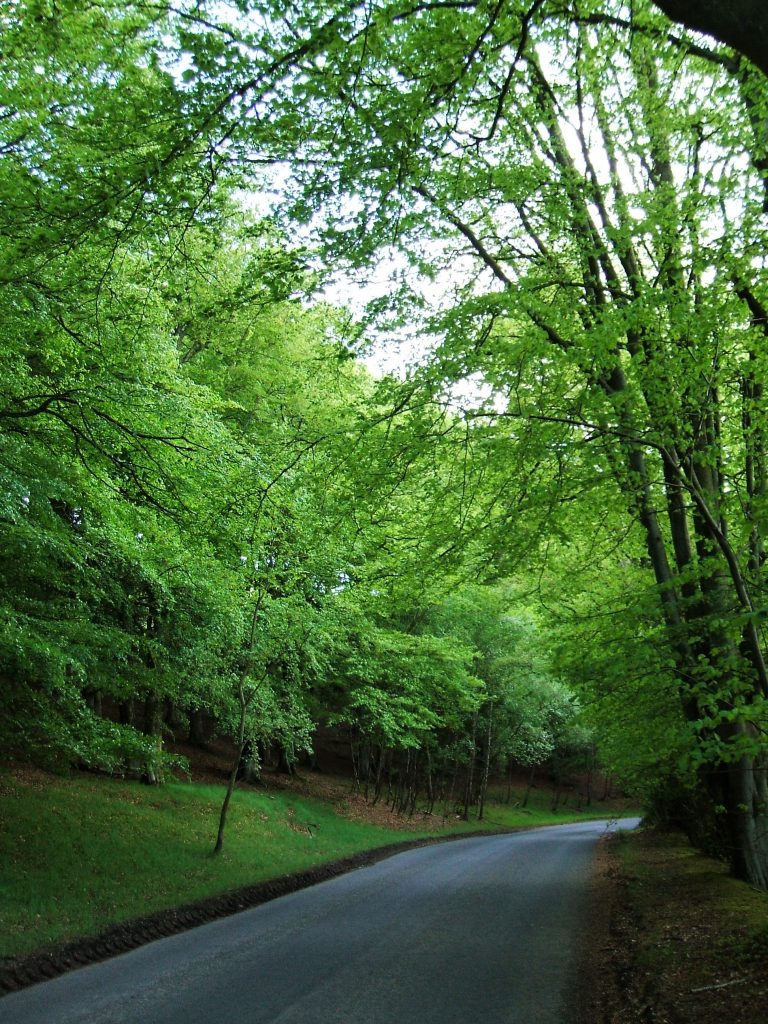
Barry Green will be well-known to many of you and a welcome discovery for those of you who haven’t been reading his words for years.
He has had an illustrious five-decade-long career writing for such titles as Racing Car News, Sports Car World as well as holding professional journalist roles with Australian Provincial Newspapers and News Limited and motoring writer and editor of the RACQ’s Road Ahead magazine. Along the way he found time to write and self-publish a trilogy of retro motor sport narratives – Driven to Succeed (the biography of Alec Mildren), Longford: Fast Track Back and Glory Days (the Albert Park story from 1953 to 1958).
Now you can revel in his recollections of more than 80 drives of an eclectic mix of machinery on some of the world’s finest roads and racing circuits.
